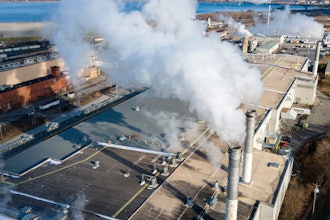Lower cost feedstocks in Middle East and North America drawing investment from higher cost regions like Asia; discussions will take center stage at IHS Forum Singapore
Singapore – Global spending on chemical production capacity additions will peak in 2014 at $120 billion and then begin to decline, according to analysis from IHS. Asia, and China in particular, long the epicenter of global chemical supply and demand, will remain the dominant global force for chemicals beyond 2020. However, Asia will feel the pinch as some capacity additions shift to North America and the Middle East, where feedstocks are less costly thanks, in part, to unconventional shale energy.
This issue of global and Asian chemical capacity additions peaking - coupled with China’s desire to achieve greater self-sufficiency in chemical production - will be key points of discussion at the IHS Singapore Forum 2014, June 10 - 12, 2014, at the Swissôtel The Stamford, Singapore. A full agenda and additional information can be found at: http://ihsglobalevents.com/forum/singapore2014/agenda/.
“Our analysis at IHS Chemical shows that global spending on capacity additions will peak in 2014 and then begin to decline,” said Russell Heinen, director of technology and analytics at IHS Chemical and head of the IHS Chemical Downstream Capital Cost Service. “Since spending precedes capacity additions coming on-stream, spending starts to decline prior to the drop in capacity additions. As for Northeast Asia, and especially China, they are still giants in terms of chemical production and demand and will continue to account for a significant share of future global capacity additions,” he said. “However, the rate of capacity additions in the region will decline. IHS expects Asian capacity additions to drop to levels close to what we saw at the beginning of the century, and these trends will drive our discussions at the IHS Forum in Singapore.”
Heinen said: “Asian producers are starting to feel the effects of an economy that is growing more slowly, but also the impacts of the feedstock cost advantages that their competitors enjoy in the Middle East and in North America. In response, Chinese chemical producers are adding coal-based capacity to take advantage of the one low cost feedstock they have.”
During the last decade, chemical capacity additions on a global basis have largely been driven by Northeast Asia. Since 2000, the world has added nearly 1 billion metric tons of total chemical capacity and Northeast Asia, specifically China, has accounted for more than 70 percent of this increase, which was driven by the rapid economic growth in China. However, this trend is changing—and overall chemical capacity additions will peak in Northeast Asia in 2014.
Capacity additions in North America, which had been very minimal for the last 20 years, Heinen said, are increasing due to the change in feedstock position caused by unconventional development. “We currently expect capacity additions in the U.S. to peak at more than 15 million metric tons (MMT) in 2017, accounting for about 20 percent of the world’s additions,” he said.
“Since the activity in North America is just starting to ramp up and the spending on these projects will accelerate in 2014 to 2016,” Heinen said, “the decline in global spending is seen as one factor that could help mitigate cost increases as projects get under way.”
Despite a reduction in spending on new capacity, China’s contributions to global production will continue to impress. IHS Chemical estimates that during the period 2000 to 2020, China will grow its basic chemicals capacity production (which includes benzene, chlorine, methanol, propylene and ethanol), by nearly 170 MMT. In other words, China will add 47 percent of the estimated global total additions expected for basic chemical production during the period. The two next largest producing countries for expected capacity additions in basic chemicals during the same period are Saudi Arabia, at 7 percent capacity additions, followed by the U.S. at 6 percent.
“From 2013 to 2018, China is going to add 9 MMT of domestic polyethylene capacity alone, which is significant,” said Nick Vafiadis, senior director, global olefins and plastics at IHS Chemical. “Equally significant is the fact that much of this new production capacity will be quite competitive on a cash-cost basis due to advances in coal-to-olefins technologies.”
Attendees at the IHS Forum Shanghai event also will hear briefings on the implications and opportunities for Asia as the epicenter of chemical supply and demand; a discussion on chemicals and polymers; and a session on petrochemical feedstock diversification and how natural gas liquids and coal are changing the global cost curve.
***It should be noted that the spending discussed represents only the capital needed to support the on-site requirements and necessary off-sites for the capacity processes added. The IHS spending estimates referenced do not include the capital for infrastructure, land, site improvements and technology licensing. In general, IHS analysis indicates that the total capital required for a typical project is twice the cost we estimate for the process itself.






















